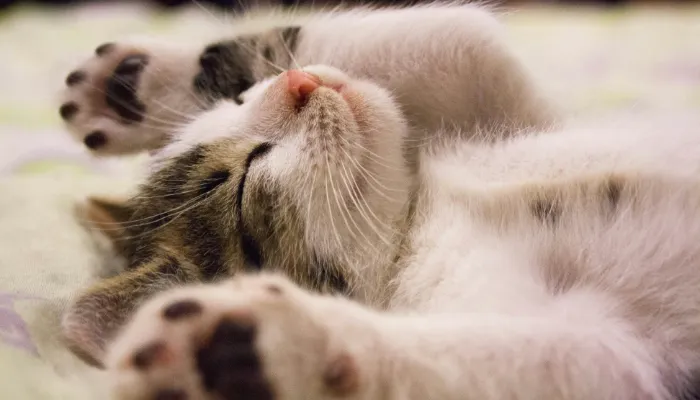The idea of How to Speak Cat Translator is very appealing to cat enthusiasts across the globe. Cats may not know any human languages, but they do communicate through sound, movement, and actions.
Grasping this with deep understanding helps to strengthen the relationship between the cat and its owner. Certain cat translator apps and devices have come up in the market claiming to work as cat translators by decoding meows and other kitty gestures.
But as mentioned above, real communication with your kitty resides in observation and recognition of their behavioral patterns. This guide will help you through the various aspects of cat language, its body expression, the effectiveness of gadgets or apps in improving the interactions between humans and cats and tell you “how to speak cat translator”.

How to Speak Cat Translator: Understanding the Basics
Cats have their own unique style of communicating with humans and other creatures. In contrast to canines, who depend on physical cues to an extent, cats’ self expression is achieved through a combination of vocal sounds, body positions, and other gestures.
If you want to comprehend the words that come out of your furry companion’s mouth, knowing their language is a must. That is where the idea of How to Speak Cat Translator comes in, assisting pet owners in understanding meows, tail positions, and facial movements.
Understanding different types of feline communication will make it easier to connect with your pet on a deeper level and allow you to meet their needs more efficiently.
Different Cat Sounds
Cats make various sounds according to how they feel. The table below illustrates common cat sounds and what they may mean.
| Vocalization | Meaning |
|---|---|
| Meow | A general form of communication; can indicate hunger, greeting, or demand for attention. |
| Purring | Often a sign of relaxation and happiness, but can also indicate pain or distress. |
| Hissing & Growling | Signals fear, anger, or a warning to back off. |
| Chirping & Trilling | Usually used by mother cats to call kittens or as a friendly greeting. |
| Yowling | Can indicate mating behavior, distress, or discomfort. |
| Chattering | Often seen when a cat watches birds; may indicate excitement or frustration. |
Decoding these sounds enables to translate all of your cat’s emotions and needs precisely.
Cat Body Language Basics
The body language of a cat is as crucial as its sounds. Here are some essential ones to help you out.
Tail Positions and Their Meanings
- Upright with a slight curve – Happy and sociable.
- Twitching tail – Can also imply annoyance or nervousness.
- Fluffed-up tail – Also signifies fear, aggression.
- Low tail or tucked under body – Implies insecurity and/or submission.
Ear Movements
- Entrance Forward Faced Ears – Implies being alert and having interest.
- Rotating Ears – Permits hearing sounds from multiple directions.
- Flattened Ears – Implies anger and/or fear.
Eye Contact and Blinking
- Staring Without Blinking – Represents a sign of challenge and/or dominance.
- Slow Blinking – Implies trust and affection.
- Dilated Pupils – Can indicate excitement, being scared, even playful.
Doing so enables you to better “interpret” the emotions your cat expresses.
Knowing how to decipher feline body language is important as it outlines how you ought to respond to your cat’s diverse needs.
Although cats cannot speak like humans do, they use various forms of body language and vocalizations to convey their feelings. Devices such a How to Speak Cat Translator or observative techniques can aid cat owners in improving the relationship that they have with their pets. It is possible to achieve a higher level of understanding with your best friend by paying attention to their sounds and movements.

Can Humans Learn to Speak Cat?
It’s not about different types of meows, it’s recognizing verbalization patterns, observing body language, and understanding the behavior of the animal. Although they do not “speak” in human languages, cats have developed their own ways of communicating with their owners.
So, they can be “translated” by understanding these cues and paying attention to them. In this section, we will cover how to have a more in-depth understanding of cat speech patterns, provide appropriate and efficient human speech, and enable greater pet owner rapport.
Check Patterns in Your Cat’s Speech
Specific pets are able to learn words and phrases, likewise, each cat has an exclusive “vocabulary” that consists of sounds and gestures. In order to speak cat languages fluently, one needs to monitor and research the behavior exhibited by the cat over some time.
- Life Experiences with Track Repetitive Sounds: Cats often develop a specific sound they use as a way to signal indicates them. This occurs during terms like feeding where we would expect it before mealtime and even during mealtime to alert those around them.
- Vocal Associated with Movement Activity: While rubbing against you, meowing might be a sign of affection. A loud and prolonged meow coming from by the door may actually suggest further wanting to go outside.
- Make Perceived Differences Between Breeds: Certain breeds such as Siamese cats tend to be more talkative than others.
Common Cat Sounds and Their Meanings
| Vocalization | Possible Meaning |
|---|---|
| Short, soft meow | Greeting or acknowledgment |
| Loud, drawn-out meow | Demand for food or attention |
| Chirping or trilling | Excitement, communication with owner |
| Purring | Contentment (or sometimes pain) |
| Hissing or growling | Fear, discomfort, or aggression |
Knowing these patterns gives you a general idea of how to use a ‘How to Speak Cat Translator’ that does not use electronics, funny, I know.
Using Tone and Words to Communicate with Cats
Just like Dogs, Cats do not understand human language, but they can be taught through repetition in action and sounds.
- Soft, soothing voice: A gentle voice comes in handy in calming anxious or overexcited cats.
- High-pitched, excited tone: During playtime, an excited voice can encourage cats to be more active.
- Firm, low tone: This can be used to put across a do not act or deepen the warning.
Steps to train cats to recognize words
Associating words with guns or other actions is something that can be taught to cats with patience. To do that follow the steps:
- Use Simple Words – Use clear and short words to get immediate actions like “treat,” “dinner,” and “play,”.
- Pair Words with Actions – First start to feeding shout out loud “food”. Your cat will then begin to associate with feeding time.
- Repeat Consistently – More you will repeat clearly words the stronger it gets.
While cats may not speak back, it is possible to train them to recognize words through the appropriate use of phrase.
The Role of Bonding in Communication
Owners who earn the trust of their cats improve the quality of their communication with them. With the bond of trust that you create, it becomes easier to interpret their messages.
- Play With Your Pets Regularly: Petting and playing with a cat enhance the trust relationship.
- Give Them a Chance to Avoid You: Let your cat choose when to come to you.
- Practice Gentle Blinking: Try to slow blink back when your cat is gazing at you. That’s their way of saying they trust you!
When your pet cat feels secure enough, you should be able to clearly hear what it is trying to tell you. Being able to “cipher” cat does not require the use of a How to Speak Cat Translator application.
With appropriate observation, listening, and accurate responses, you stand a chance to understand your cat. After all, you and your feline friend speak different dialects. While technology certainly has its place, the key to effective communication with your feline friend is the willingness and taking the time.

Cat Translation Technology: Does It Help?
In today’s world, pet owners are increasingly looking for ways to connect with their pets. This has led to the emergence of applications and devices that boast the ability to function as a “How to Speak Cat Translator.”
But do these resources actually serve the intended purpose? This is an important examination of their performance, fidelity, and usefulness in resolving the communication challenge between humans and cats.
What is a Cat Translator?
The cat translator apps captures the sounds and body movements made by cats and analyzes them to formulate what these utterances would mean in human language. Such devices can be referred to as cat translators. These tools employ AI and machine learning to interpret cat sounds and try to assign meanings to them based on previously collected research data on feline behavior.
Popular Cat Translator Apps & Devices
Here are some notable cat translation tools available in the market today:
| Cat Translator | Characteristics | Precision |
|---|---|---|
| MeowTalk | AI-based sound recognition, custom dictionary for individual cats | Moderate |
| Human-to-Cat Translator | Fun app with pre-recorded cat sounds | Low |
| Catterbox (Prototype) | Smart collar that “translates” meows | Experimental |
These devices might be fun, but the effectiveness resonates strongly with the specific cat and their distinctive vocal patterns.
How Accurate Are Cat Translators?
Human to cat translator may purport to interpret cat sounds, but, as is often the case, there is more than meets the eye:
Pros of Cat Translators
- Helps to determine simpler emotional context (i.e., distress, happiness, hunger).
- Helps new owners of cats learn to speak cat.
- Strengthens pairing through interaction.
Cons of of Cat Translators
- The accuracy is dubious, as we know cats lacking a universal language just like humans have.
- Most of the tools available rely on severely inadequate databases and won’t work with most cats.
- Cats combine vocal sounds and body language in ways that apps cannot read.
While these apps provide some insight into the possible meaning of cat sounds, they are more of a fun tool instead of a serious resource.
Can Technology Help To Advance The Human-Cat Relationship?
Technology might not get 100% a compliment, but it certainly gets us closer to understanding cat behavior and how it can be done more effectively with the help of these devices.
- Pattern Recognition – Owners can set up Apps to detect certain sounds that are associated with specific actions such as “meow” for feeding.
- AI Learning – Some owners may use applications that their cats can “talk” to and the owners can improve the accuracy of their cat’s vocabulary over time.
- Educational Value – Some people using these Apps may become more sensitized to the intricacies of feline communication.
No gadget will ever give a cat’s language a one-to-one translation but a “How to Speak Cat Translator” can certainly give you enjoyable moments with your cat. The best way to know your cat will always be by listening to them, watching how they move, and monitoring other facets of their behavior.
Conclusion
How to Speak Cat Translator is not simply about an app or device but it’s also centered around how attentive one can be to a cat’s distinctive means of demanding needs and emotions. While new technologies provide entertaining ways of trying to understand cats better, listening emerges through observing the speech, the gestures, and actions.
Fighting every need to notice and slowly face an animal coupled with an open bond lets you take advantage of personal signals and responses from the cat’s end, creating a safe environment for them. A combination of natural observation or attempts through digital interpretation suggests that translating thoughtfully requires kindness and concentration on what the cat has to offer.
